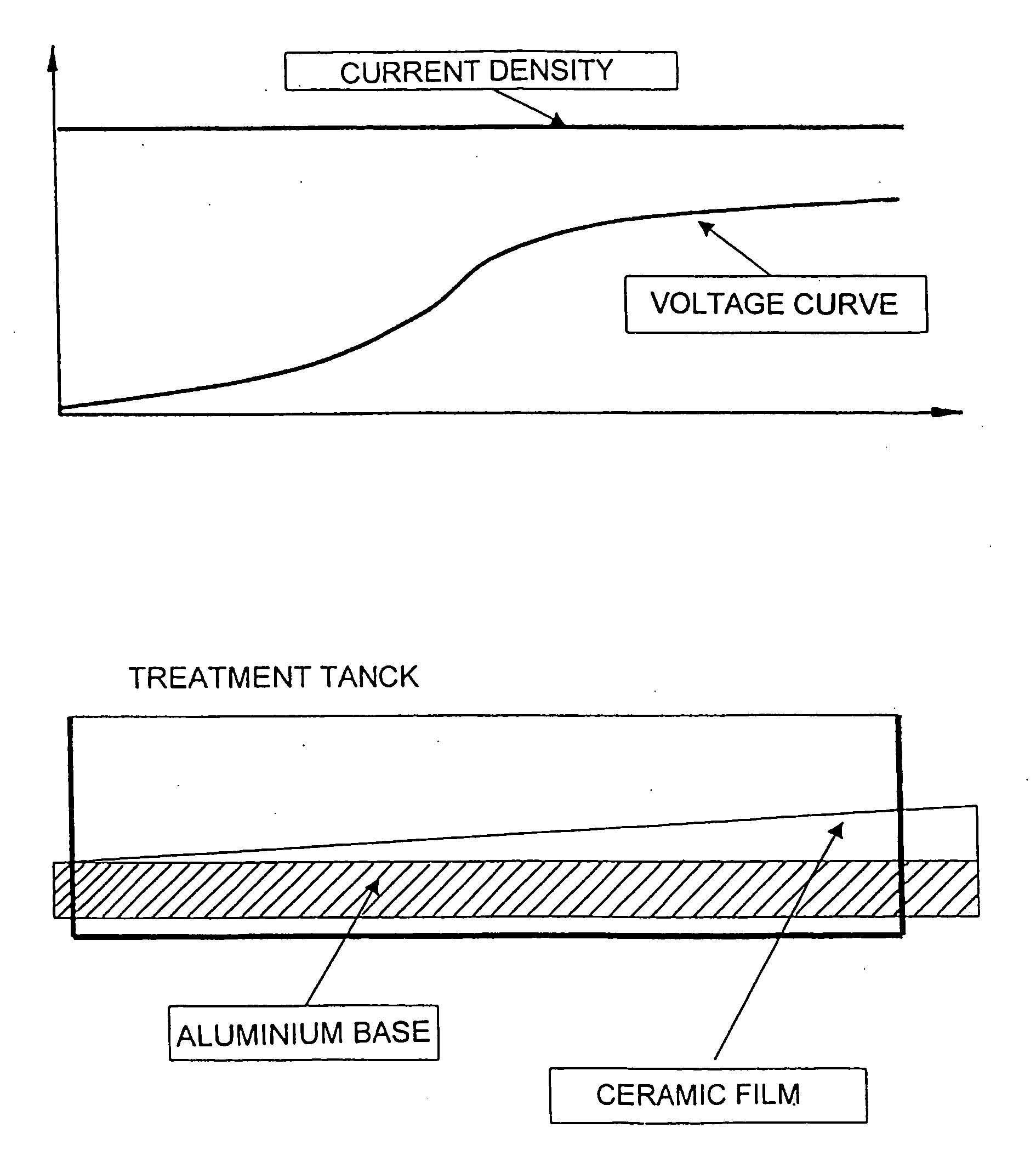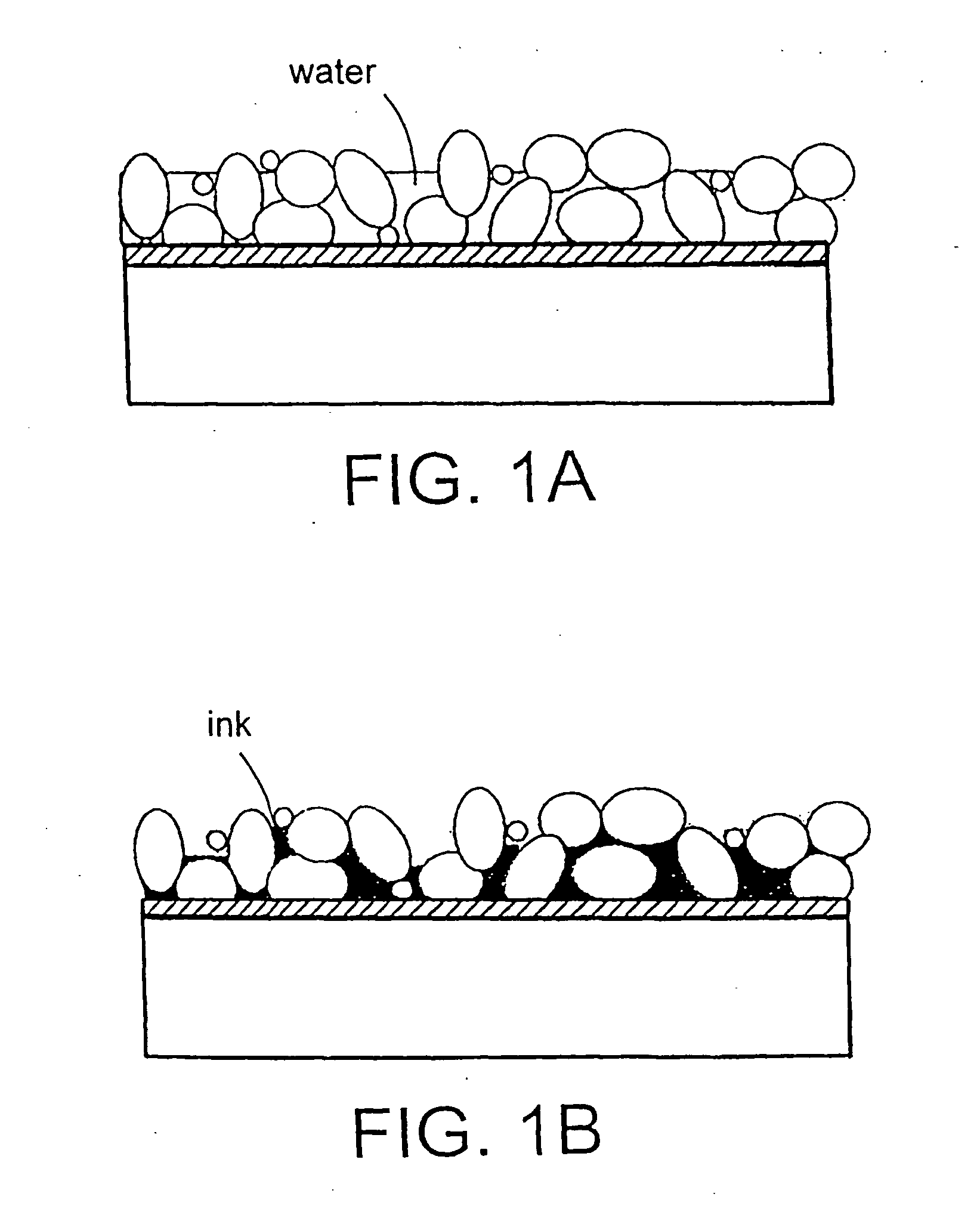Plate for offset printing and method for manufacturing said plate
- Summary
- Abstract
- Description
- Claims
- Application Information
AI Technical Summary
Benefits of technology
Problems solved by technology
Method used
Image
Examples
example 1
[0082] A strip of aluminium with a thickness of 0.14 mm and a width of 400 mm is taken. It is made to advance constantly at 5.0 m / min, while the anode is kept connected, through a first tank (first step of the treatment) where the bath is made up of a solution of potassium phosphate acid with a concentration of 10% by weight, ammonium—zirconium carbonate with a concentration of 19% by weight and ammonium—hafnium carbonate at 1% by weight in relation to the total of the solution.
[0083] The temperature of the bath is kept constant at 30° C. by means of a conventional heat evacuation system.
[0084] The strip of aluminium is gradually submitted, over the course of its travel through said tank, to a steady increase of voltage from 0 to 140 V, and from 120 V a clear white bubbling on the surface of the strip can be observed. When the treatment has been completed, the charge passed per unit of surface treated is 20 kC / m2. The resulting surface is whitish and uniform.
[0085] The strip is t...
example 2
[0094] A procedure similar to that described in example 1, but the composition of the bath of the first step was 15% by weight of ammonium—zirconium carbonate, 1% by weight of ammonium—hafnium carbonate and sodium tetraborate at 1% by weight in relation to the total of the solution. The need to provide 20% less water than usual was observed. 10,000 prints were made. Excellent results were obtained in the printing tests.
example 3
[0095] A procedure similar to that described in example 2, but the composition of the bath of the first step was 10% by weight of acid carbonate of ammonium, 10% by weight de aminoformiatoammonium and ammonium—zirconium carbonate at 6% by weight in relation to the total of the solution. The speed of the strip was 3.0 m / min. The need to provide 10% less water than usual was observed. 25,000 prints were made. Excellent results were obtained in the printing tests.
PUM
| Property | Measurement | Unit |
|---|---|---|
| Temperature | aaaaa | aaaaa |
| Temperature | aaaaa | aaaaa |
| Temperature | aaaaa | aaaaa |
Abstract
Description
Claims
Application Information
 Login to View More
Login to View More - R&D
- Intellectual Property
- Life Sciences
- Materials
- Tech Scout
- Unparalleled Data Quality
- Higher Quality Content
- 60% Fewer Hallucinations
Browse by: Latest US Patents, China's latest patents, Technical Efficacy Thesaurus, Application Domain, Technology Topic, Popular Technical Reports.
© 2025 PatSnap. All rights reserved.Legal|Privacy policy|Modern Slavery Act Transparency Statement|Sitemap|About US| Contact US: help@patsnap.com



